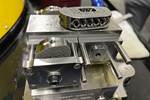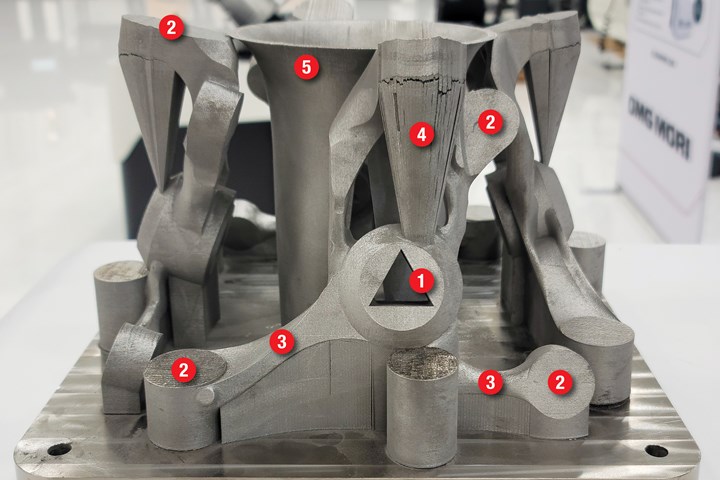Designing a 3D Printed Part with Machining in Mind
Designing extra stock and mounting features into a 3D printed part can aid in machining processes downstream.
Machining can be an obstacle in the quest for “first-time right” 3D printing — designers need to ensure parts can be held in the machine tool, and that machines can access the features and critical surfaces that need to be machined. The digital thread can aid in this by connecting designers with machining simulations, so they can adjust the part accordingly.
Adam Hiller, additive manufacturing and Siemens Xcelerator portfolio solutions consultant at Siemens Digital Industries Software, designed this 3D printed steering knuckle for an eRod (electric dune buggy) from Kyburz using Siemens software solutions connected by the digital thread. “We’re thinking of the entire lifecycle now instead of just saying, ‘Oh, the part looks cool, it does what we want and it will satisfy all our criteria,’” he explains. “We're saying, ‘Let's also make sure that everybody else downstream is able to do as automated of a process as possible.’” Here are several features on the as-printed part that were designed with machining in mind:
- Triangular mounting feature in center spindle hole. This triangle within what eventually became the spindle hole served as a mounting feature, and was eventually milled out.
- Extra stock in bolt holes. The four bolt holes were also machined (instead of printed) to ensure quality and precision at the points where the part attaches to the vehicle.
- Extra stock on critical surfaces. Designers added extra stock to the sections of the part that make contact with the vehicle. These areas were machined to ensure a flush fit.
- Machinable support structures. Support structures in metal 3D printed parts serve the important functions of holding up overhanging features and distributing heat away from the part to prevent warpage. Once the part is out of the printer and support structures are no longer necessary, they are typically removed by hand or machine tool. Hiller wanted postprocessing for the steering knuckles to be as automated as possible, so he ensured that the machine tool could access all of the support structures for removal.
- Trumpet mounting feature. While simulating the machining process, machinists realized the parts were at risk of being ripped off the build plate due to vibration. Hiller worked with the machinists to create a trumpet-shaped structure in the middle of the build plate to securely mount the parts for machining.
To learn more about how Hiller and his team used the digital thread in this application, read “Digital Thread Enables First-Time Right 3D Printing.”
More From This Author
Julia Hider is a senior editor for Modern Machine Shop, where she writes about the metalworking industry. She also serves as the robotics and autonomy correspondent for parent company Gardner Business Media. To find more of her content, SUBSCRIBE HERE.
Related Content
-
New Zeda Additive Manufacturing Factory in Ohio Will Serve Medical, Military and Aerospace Production
Site providing laser powder bed fusion as well as machining and other postprocessing will open in late 2023, and will employ over 100. Chief technology officer Greg Morris sees economic and personnel advantages of serving different markets from a single AM facility.
-
VulcanForms Is Forging a New Model for Large-Scale Production (and It's More Than 3D Printing)
The MIT spinout leverages proprietary high-power laser powder bed fusion alongside machining in the context of digitized, cost-effective and “maniacally focused” production.
-
3D Printed Lattice for Mars Sample Return Crash Landing: The Cool Parts Show Bonus
NASA Jet Propulsion Laboratory employs laser powder bed fusion additive manufacturing plus chemical etching to create strong, lightweight lattice structures optimized to protect rock samples from Mars during their violent arrival on earth.














